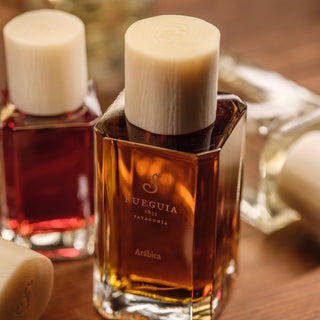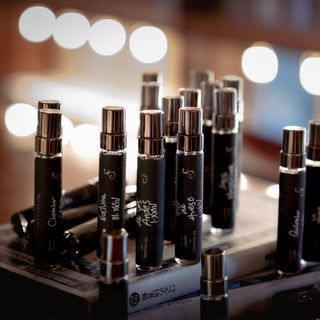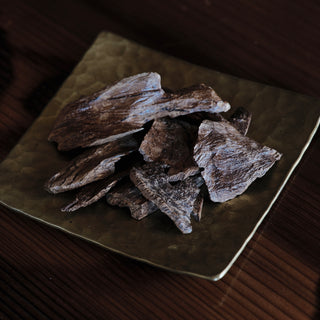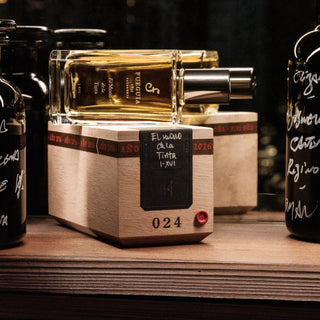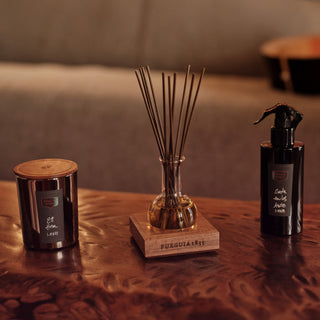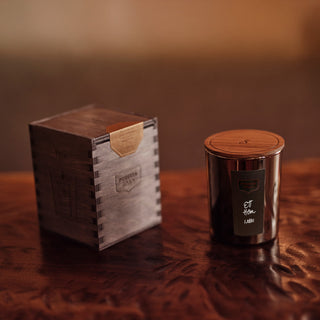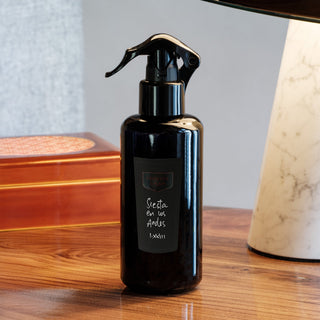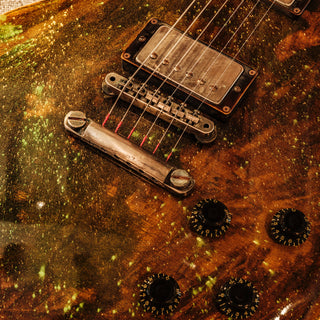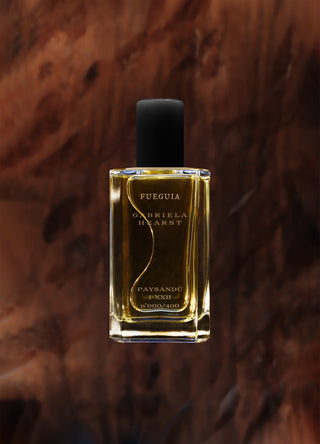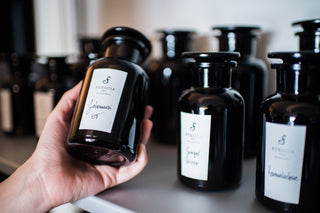パイサンドゥ
Paysandú
- Unit price
- /
Pura Esenciaとは
PURA ESENCIAとは、古来より続く香水の伝統において最も古く、最も原始的な手法にインスピレーションを受け、FUEGUIA 1833が創り出した香水における革新的なコレクションです。アルコールなどの溶剤を一切使わずに作られたPURA ESENCIAは、FUEGUIA 1833の香水で最も深い付け心地が味わえます。力強く濃密な、唯一無二の一滴です。
この究極にピュアな香水のエッセンスは、天然の精油はもちろんのこと、様々な最新の技術をもって抽出された厳選された香料で組み立てられています。原料のピュアな香りを引き出すことで、香水そのものが持つ究極の複雑さを表現し、その魂を感じることでしょう。
FUEGUIA 1833創業者であり植物学者でもある、ジュリアン・ベデルが長年表現したかった香水の原点がここにあります。
スプレーするのではなく直接肌にのせて纏い、その一滴をエレガントに首筋、手首などに丁寧に触れるようにつける。新しく、そして原点に立ち戻ることのできる香水です。
濃度
100%
香料原料を純粋な状態で身にまとうことができます。
使用方法
ふたについた雫をそっと肌に数滴のせてまといます。
保管方法
UV(紫外線)の影響を受けるため、直射日光の当たらない暗所での保存をお勧めいたします。
注意事項
- 開閉時など、ご使用時は平な場所に置いてください。
- 開ける時は蓋は軽く回して垂直に引き抜いてください。
- 蓋が開きにくい場合は、手のひらで軽く温めてからご使用ください。
- 閉める時は蓋に過度な力を加えず、垂直に押し込んでください。
- 特性上、温度の低下によりにベタつきや沈殿物が生じる場合がございますが、問題なくご使用いただけます。
- 持ち運びには適しておりません。
Editionとは
エディションとは
各製品に表記されたローマ数字を指します。エディション表記が同じ製品は、同時期に創られた製品としてご確認いただけます。
エディションによる違い
植物を採取した時期や季節により香りの揺らぎがございます。
シリアルナンバーについて
すべての製品は生産時に入手可能な植物原料を厳選したリミテッドエディションです。
※ お取扱いのエディションはギャラリーにより異なる場合がございます。詳しくは各ギャラリーへお問い合わせください。
※ボトルキャップは画像の仕様と異なる場合がございます。
Year launched : 2023
Collection : Destinos
Main Aromatic Family : Floral
Secondary Aromatic Family : Aromatic
Acorde
Tonic note : Marcela
Dominant note : Jazmín del País
Sub Dominant : Carqueja
Melodía
Jasmine, Lemon, Espinillo, Dama de Noche, Cedrón, Coronilla, Cabreuva, Butiá, Copaiba
Resin, Palo Santo Andes
Sensaciones
Herbal; marcela; carqueja; jasmine; sweet, green; lemony infusion; a walk in the Uruguayan
countryside, wildflowers in one hand and chamomile and carqueja for tea in the other; nocturnal green
Historia
The wind that raised me and the storm that shaped me. -Gabriela Hearst
Paysandú takes inspiration from rural Uruguay, where Gabriela Hearst and Julian Bedel were raised.
私を育てた風と私を形作った嵐。
ガブリエラ・ハーストによるこの「Paysandú」は、ガブリエラ・ハーストとジュリアン・ベデルが育ったウルグアイの田園地帯からインスピレーションを得ている。
※製品の改良や表示方法の変更などにより、Acorde(アコード)や成分表記が変わる場合がございます。
[ Perfume ]
変性アルコール、香料、水
FUEGUIA 1833 は、各原材料がもつ特性を最大限ありのままに製品化することを重要視しております。
そのため全ての製品は、伝統的な製法を用いて多様性豊かな天然由来原料を使用することで、製品の一部には保管環境の中で結晶化や澱がみられる場合がございます。
これらは天然由来成分に起因するものであり、製品の品質、性能、安全性には一切影響を与えません。
これらの反応は、FUEGUIA 1833 がエッセンス生産に対してこだわり抜いた製造を行っていることの証でもあります。
ご使用上の注意
- 直射日光のあたるお肌につけますと、かぶれたりシミになることがありますのでご注意下さい。
- お肌に異常が生じていないかよく注意して使用してください。
- お肌にあわない場合は使用を中止してください。
- 傷やはれもの、しっしん等異常のある部位にはお使いにならないでください。
- 使用中、赤味、はれ、かゆみ、刺激等異常が現れた場合はご使用を中止し、医師にご相談されることをおすすめします。
- 目に入ったときは、直ちに洗い流してください。
- 目の周りは避けてお使いください。
- 誤って飲まないでください。
- シルク、薄い布地や白または淡い色の衣類につきますと、シミになることや変色することがありますので直接お付けにならないでください。
保管及び取扱上の注意
- 極端な高温または低温の場所、直射日光のあたる場所には保管しないでください。
- 乳幼児の手の届かないところに保管してください。
- 使用後は必ずしっかり蓋をしめてください。
- ご購入後、長期間放置しておりますと香りに変化が生じることがございますので、お早めのご使用をお奨めいたします。
- 可然性がありますので、火気に十分注意してください。
- ガラス製の容器のお取り扱いや保管には十分にご注意ください。
- キャップ・ノズルの部分だけを持って移動すると外れることがありますので、移動時は本体をお持ちください。
- 家具類、大理石や樹脂製の洗面台等に付着しますと、変色・変形する場合がありますので、付着した場合はすぐに拭き取ってください。
- アクセサリー等につきますと、変色することがございますのでご注意ください。
- 漏れる可能性がありますので、長時間かたむけて保管しないでください。
カートに追加中
Recommendations
おすすめの商品

